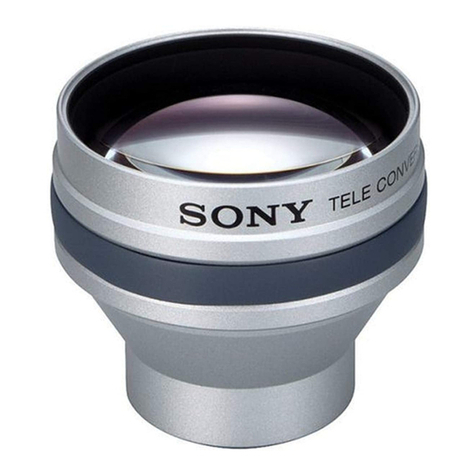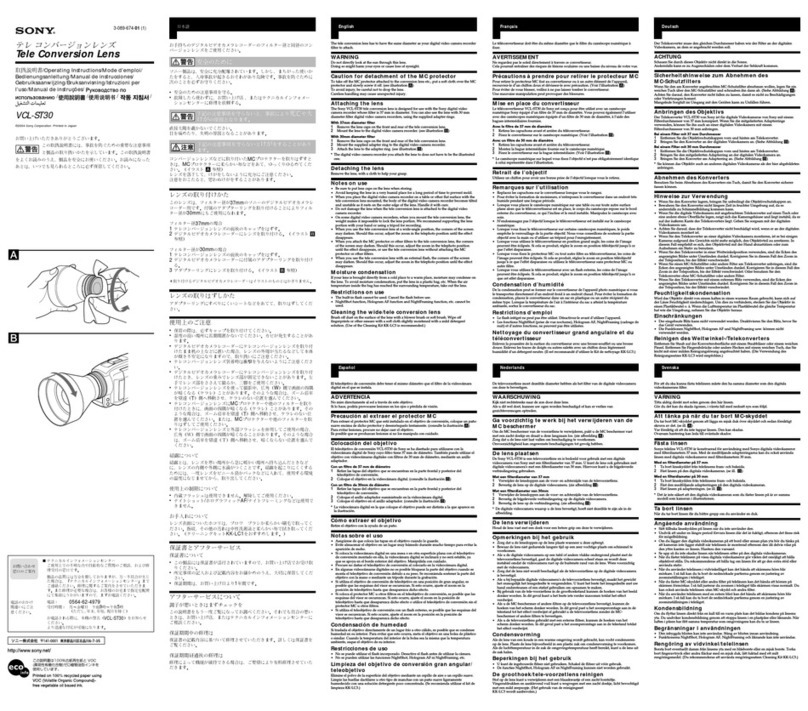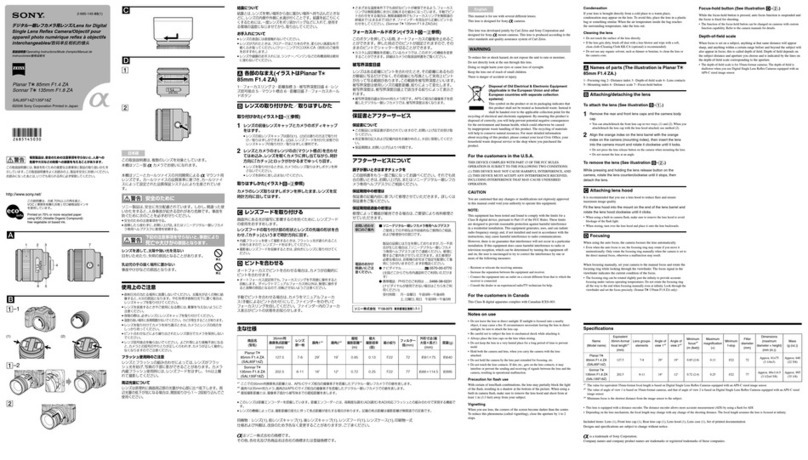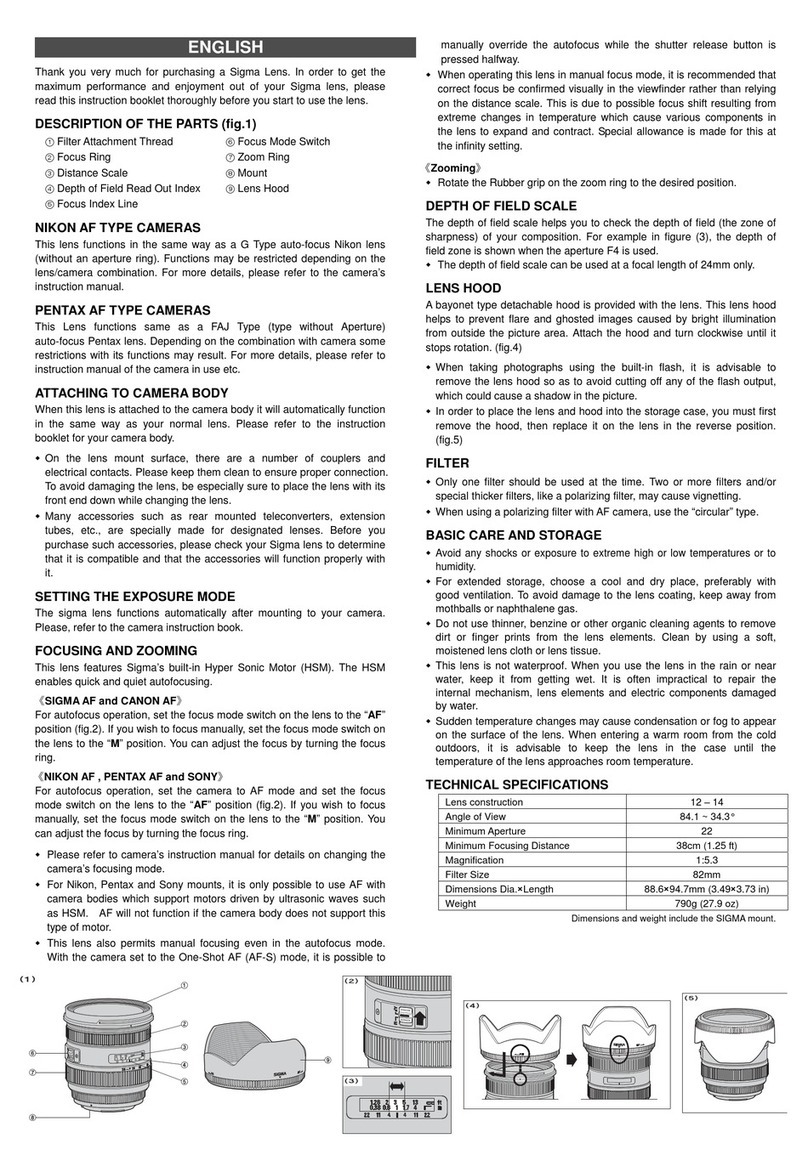Thank you for choosing our product. Your new
lens has been designed with both the eort
and experience of not only engineers, but also
of photographers. It has been created based
on the best available materials, technology
and solutions, thus making it the perfect tool
for both professionals and hobbyists.
The Irix 30 mm f/1.4 is a wide lens with manual
focus which has been designed for full frame
or smaller sensor cameras.
[1] FRONT LENS CAP
The front lens cap protects the front lens
and should always be put in place whenever
the lens is not being used.
[1]
[2]
[4]
[3]
[6]
[7]
[5]
[3] LENS HOOD
The lens hood is used to block light sources to
prevent glare and lens are, which may decrease
contrast and cause light reections in the image.
To attach the lens hood, place it so that
the white position marker lines are adjacent
to one another. Then turn the hood clockwise,
as viewed from the front lens, until you hear
a “click”. To remove the hood, turn it counter-
clockwise. During transport, the lens hood can
be attached in the reversed position.
[4] FOCUS LOCK RING
The focus lock ring lets you lock the focusing ring
into a chosen position.
To lock the focus ring, rotate the focus lock ring
left until there is noticeable resistance.
To unlock, rotate the focus lock ring all the way
to the right.
Attempting to forcibly rotate the focus ring
when in its locked position may result
in permanent damage to the lens.
[6] ENS MOUNT
Mounting the lens to the camera as described
in the camera’s user manual may dier
with various systems.
The marker (dot) on the lens body facilitates
mounting the lens onto the camera.
[7] REAR LENS CAP
The rear lens cap protects the lens during
transport and should be put in place whenever
the lens is not attached to the camera.
[8] APERTURE CONTROL
The aperture of the lens is operated electroni-
cally through the camera. Detailed information
regarding aperture operation can be found
in the camera’s user manual and may dier
for various systems.
[9] LENS HARDCASE
In order to protect the lens against dust and
scratching, it is recommended to keep it stored
in a hard case. However, remember that a hard
case does not provide protection from water,
being dropped, or shock.
[2] FRONT FILTER THREAD
The design of the lens allows the use
of 86 x 1,0mm screw-in lters.
Screw the lter on clockwise as viewed from
the front lens. Before fully screwing on the
lter, make sure the lens does not come into
contact with the lter’s glass surface, as this
may cause damage to both components.
Image coverage full frame (43.3 mm)
Focal length 30 mm
Aperture range (F) F1.4 ~ 16
Number of iris blades 11 (rounded shape)
Minimal focusing distance 0.34m (13.38”)
Focus ring rotation angle 140°
distance scale metric and imperial
Aperture ring rotation angle None
Viewing angle
(diagonal) Full Frame 72.6°
Front lter thread 86 x 1.0 mm
Weather sealing 3 rubber o-rings
Markings laser engraved, UV
reactive
Dimensions
(L x D)1*Canon EF – mount 107 x 94 mm
Weight2*Canon EF – mount 863g
[5] FOCUS RING
The lens is not equipped with an autofocus
system.
To focus on a given object, look at the image
in the viewnder or on the camera screen
and adjust it manually by rotating the focus
ring. You can also use the distance scale
(in feet or metres) on the lens body to estimate
the distance to the chosen object for
the photograph.
[10] TECHNICAL SPECIFICATION
1, 2 – a lens without accessories
* for Canon EF - mount version without lens hood
and lens caps























